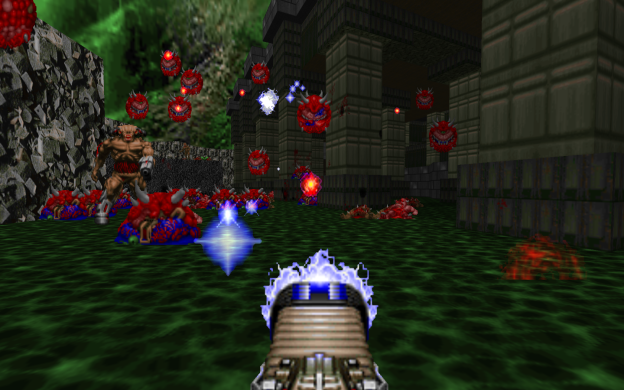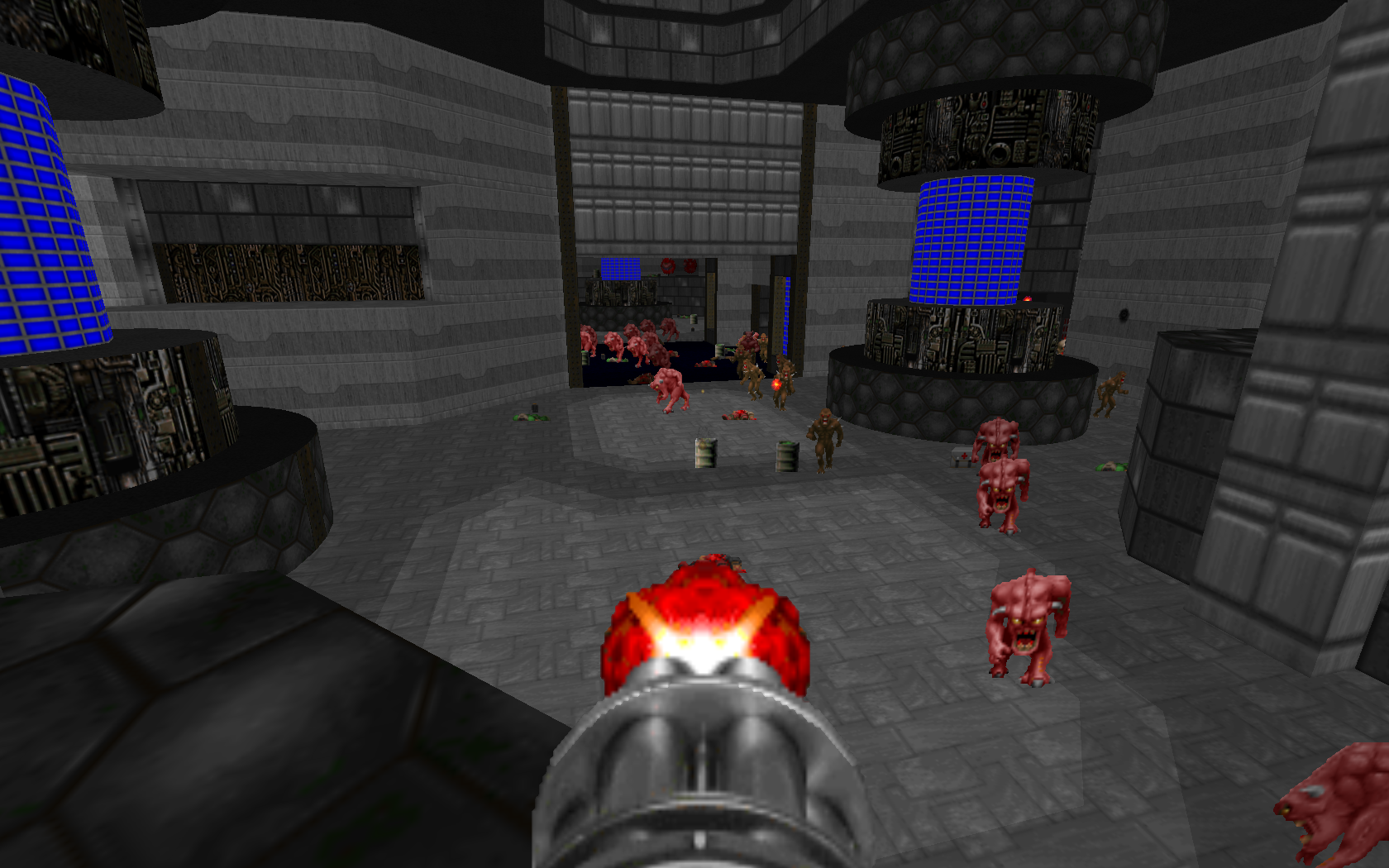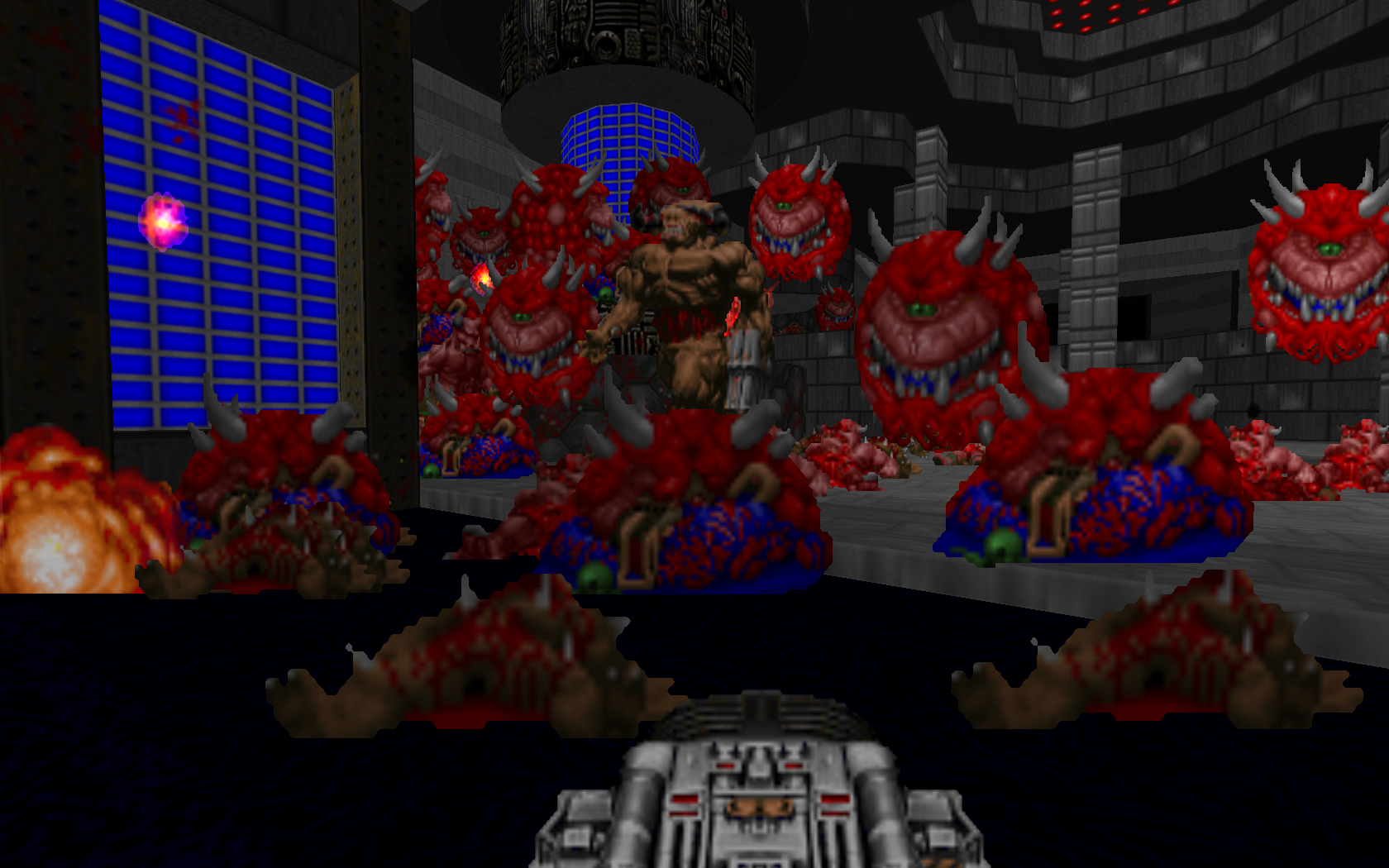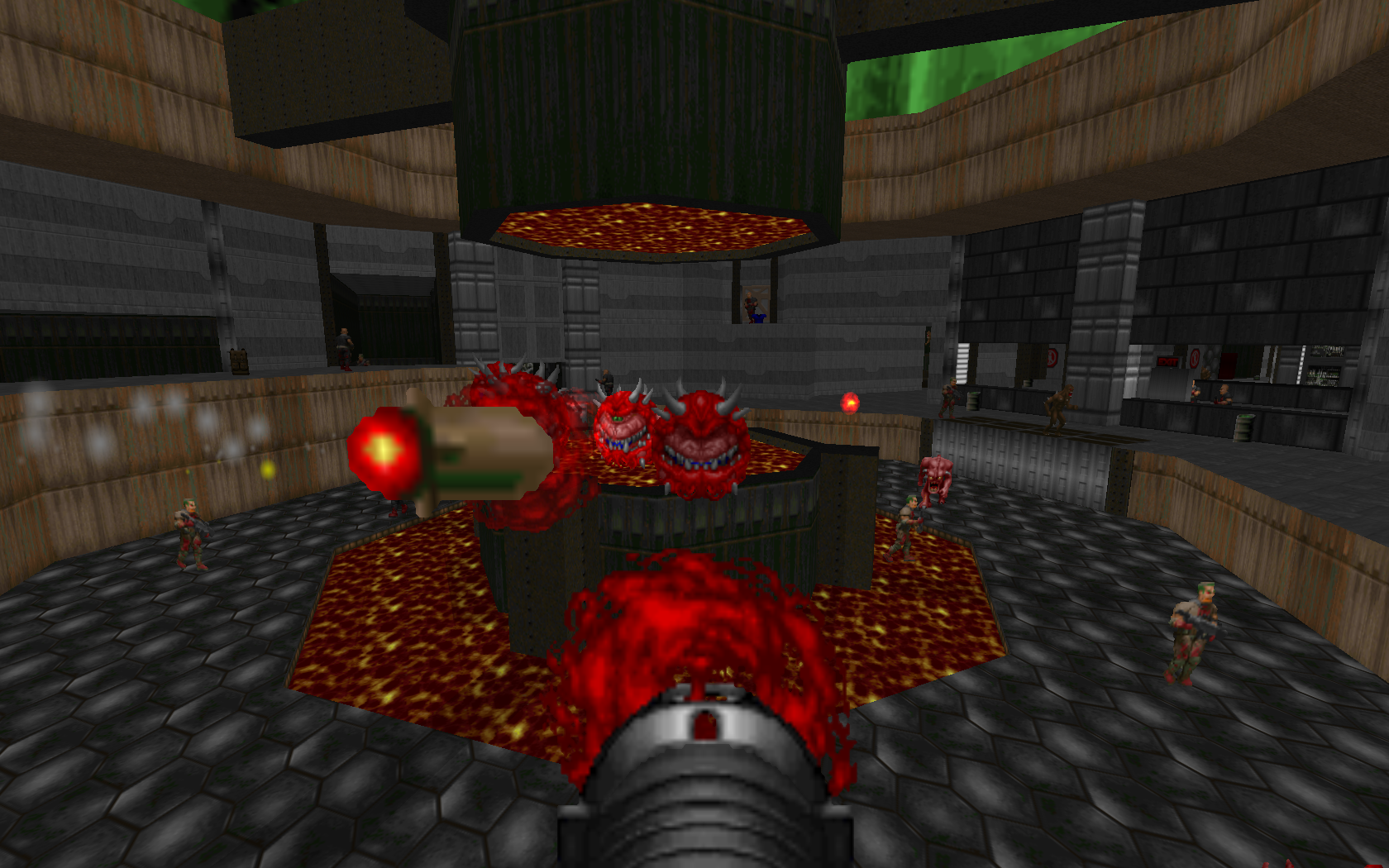At the heart of the advocacy from id about Doom 4 is the repeated references to Doom’s DNA, to the validity of this addition to the franchise. Reviewers and YouTube personalities are keen to demonstrate a command of FPS proficiency, and thus latch on to this while citing various parts of Doom 4 as being just like the original. This is understandable as it does add weight to a positive review in the form of a pseudo endorsement. “This is awesome because it is a given that the original is awesome, and I vouch that this reminds me of it.” The problem is, they are speaking of Doom as a memory, which it doesn’t have to be.
Since its release in 1993, it has always been playable on mainstream devices (and less mainstream gaming platforms, like, pianos) thanks to the original executable, Doom95, and the source ports surrounding the 1999 release of the engine code. There is no need to appeal to childhood memories when it is just as accessible today as it was on release. But this does seem to be their foundation, and I am being generous here, as if it isn’t the fault of memory, then they have serious sensory issues to work out. The following is a short list of Doom 4 attributes that Doom does not share, yet so many reviews insist that it does.
Doom Is Not “Metal”
We all can hear it at the drop of a hat if prompted, “The Doom theme”, the rapid midi guitar with shredding bits. Though that isn’t “The Doom theme”, it is the music for e1m1, Hangar, and it is atypical for the music in the franchise. Sure, Doom has some more aggressive songs, though the influences are just as much from rock as they are from metal, but it has tons of original compositions which are a mixture of upbeat grooves and moody synth and orchestral pieces. There are no double bass kicks or djent in the Doom soundtrack, but there is slap bass and electric organs. Sure, the mission summary music, also heard in e3m3, Pandemonium, is moderately metal, but the bulk of the game gives you a background groove, or a haunting melody to underscore the danger. The soundtrack for Doom 4 is an element which is whole cloth for the game. It may draw inspiration from the original works, it may incorporate them in spots, but it is very much a different soundtrack. Where Doom is metal, is in the mentality, not in the OST.
Doom Is Not “Fast”
Sure, the Doom guy runs fast. Very fast. But as Maes once noted on Doomworld, the world geometry is oversized and speed becomes relative, a function of your context. The thing is he moves twice as fast when in the state of Running, a state which is found by holding Shift in the default keybinding. There is no Always Run (Quake introduced that), there is no AutoRun by hitting CapsLock (Duke3d introduced that), in order to move at full speed in the original Doom games, you held Shift. Now, the Always Run flag is a common addition to source ports, which technically reduces the difficulty of the game some, but the design was based around Running not being a constant. The high speed was not a given. If you constantly run ahead, you’re going to find yourself in bad spots anyways, Doom is not above nasty ambushes on precarious walkways, and approaching such areas at a walking speed gives you more control over the engagement. Less experienced players likely felt the value of this in their first attempt of e4m1 on Ultra-violence. Constantly going fast, fast, fast and ever forward is not a description of Doom’s gameplay, and honestly, it isn’t really indicative of Doom 4’s either.
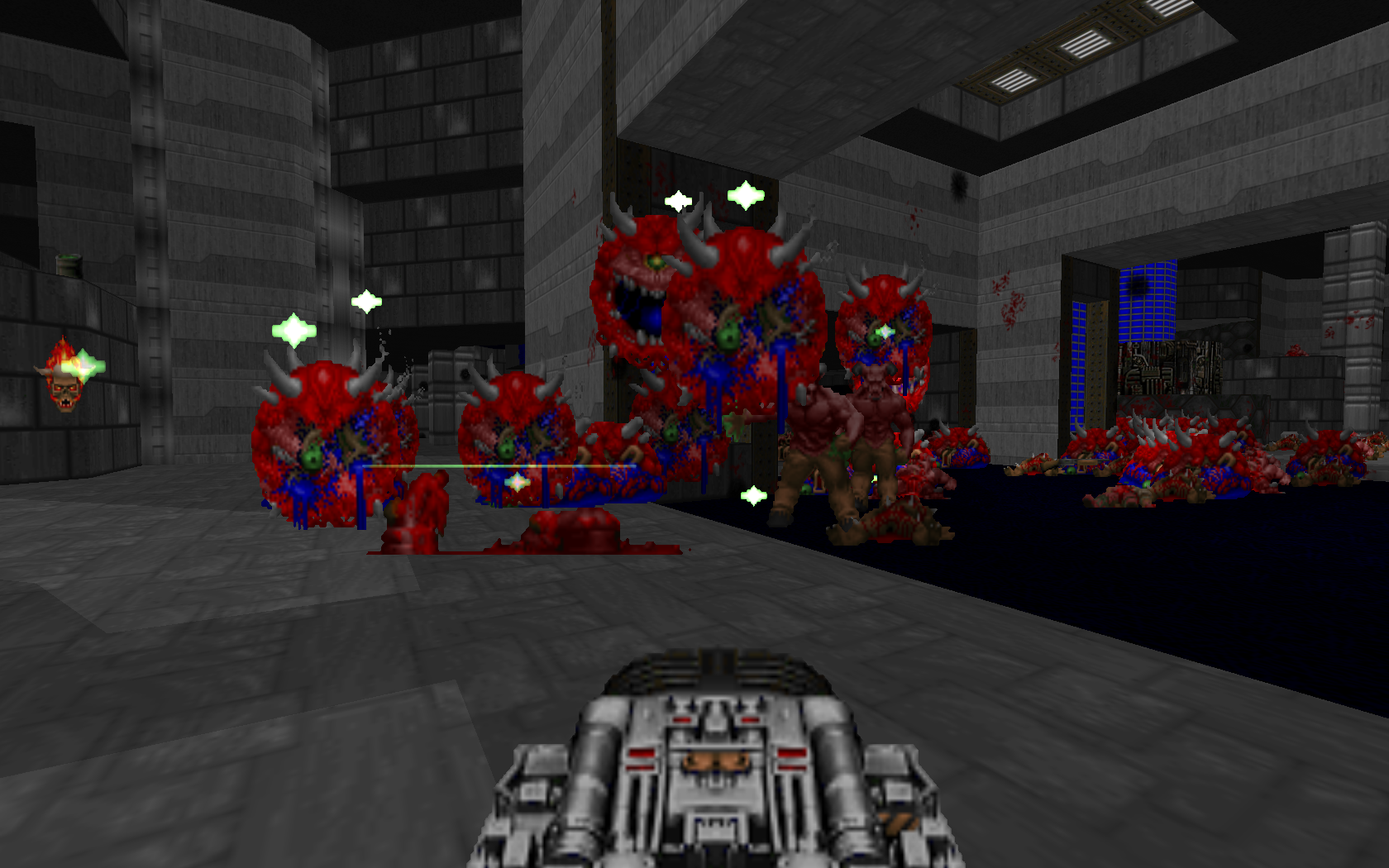
Doom Is Not “Non-Stop-Action”
This is an attribute that Doom and Doom 4 both lack actually, but I’ll focus on Doom here. Doom regularly gives players a place to take stock of situations, and with the use of triggers that absorb sound, delay the awakening of every monster. Often there will be fairly large stretches which can be empty, sans the moody and not at all metal soundtrack, while you work out what to do next, where to go, and worry about when the demons will return. This one in particular is curious to me, not because it is obvious that Doom didn’t have it, but it is plainly obvious that Doom 4 doesn’t either. It still has segments of quiet, of going through a facility uncontested, of taking a breather. This suggests a certain amount of cognitive dissonance going into vouching for their own “old school” cred, so much so that they are appealing to not just a scarecrow of Doom, but a scarecrow of Doom 4 as well.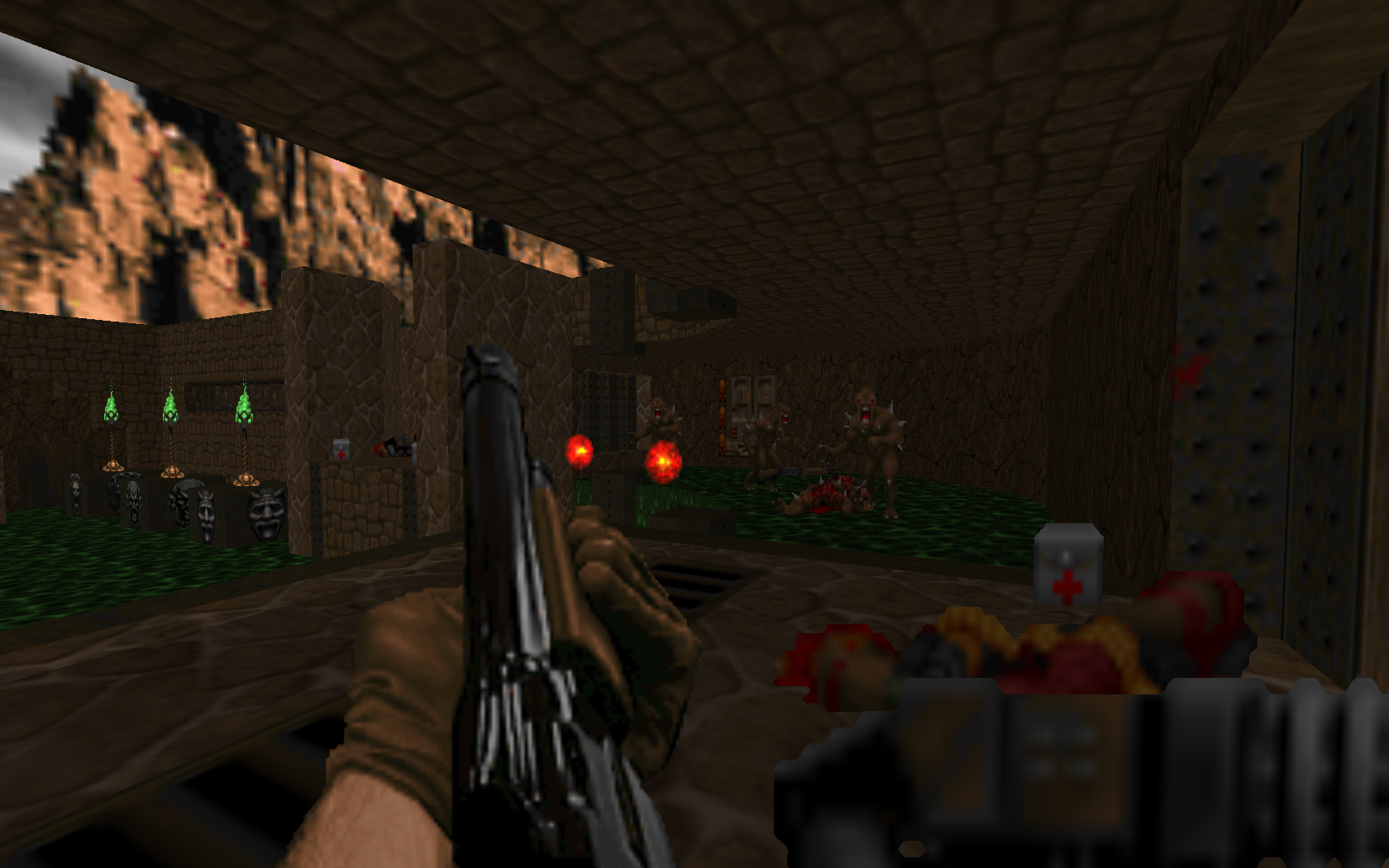
Doom Is Not Without Story
There are variations here, from the story not mattering, to it is there but you can skip it, to there not being a story. Doom does have a story, but you can skip it. The larger picture does not inform in a functional way the immediate picture of your gameplay. Doom’s manuals have stories in them, a preamble of sorts. Periodically (at the end of an episode in Doom, at the ends of maps 11, 20, and 30 in Doom 2) you are given a story update, which talks about your next goal, the surroundings, additional sensory data, and in the case of Doom 2, the fates of others. It is a simple story, because it has clear dynamics. This is yet another one where Doom 4 also doesn’t match up with the common claim. Yes, you don’t have to read the Codex entries, but, you are locked in a room for holograms once in a while, or watching a character do something. You get exposition while standing in an elevator, and later on get a huge dump of exposition while you are locked in a room for two minutes and twenty seconds. It also sticks it into mandatory actions. It may not matter in that it doesn’t impact your gameplay, but it won’t sit back like Doom’s does. Doom has a simple story, but it is indeed a story. Doom 4 has a less simple story. Neither impact the gameplay mechanics – though no games come to mind at the time of writing which do.
Doom Is Not About Feeling “Bad Ass”
Doom has a high skill ceiling. It doesn’t thrust you to it however, rather it does not undercut you at any point. It has a specific set of rules which it consistently applies, and because of that, players can become increasingly skillful with the game. They can earn it, the old fashioned way. People remember the outcome of this, as many players grew substantially in skill as they played the campaign, but they forgot the work that went into it. Doom 4 does chase this idea with the whole Glory Kill system, where the Doom Slayer demonstrates that his fists are stronger than most guns. Doom by contrast shows increased visual responses from the game with increased player input – Berserk packs when found, rockets when aimed true, barrels when triggered at the right moment all produce more intense responses, but they are not in every situation, concern limited resources, and an effort. Doom doesn’t hold you back; Doom 4 lets you stand on a milk crate and call yourself tall.
Doom’s Multiplayer Doesn’t Matter
Apologetics for a tiered product are always interesting. The poor response to the multiplayer is stark next to the amplified praise for the singleplayer, and though the marketing, UI, and official reasoning for the lack of review keys states that Doom 4 is a three pillar game, Doom 4 apologists defend the multiplayer by diminishing the importance of it. Doom does have rudimentary multiplayer, because it was in a time of rudimentary networking. It also has very fun multiplayer that was such a success it spawned DWANGO, a service just around Doom’s multiplayer that saw enough success to result in one of the founder’s going on to create Devolver Digital. People did fall in love with Doom’s singleplayer, but that only expanded when they tried the multiplayer. It wasn’t unpopular, let alone disliked. It was loved, it thrived, and it continues to be well played. It is unrefined because of when it appeared, but once people were in game, they had a blast. Most people aren’t having a blast with Doom 4’s multiplayer. It falls short. Doom’s multiplayer is part of its identity.
Doom is not abandonware, it is not ancient history, it is not hidden away in dark tombs and basements behind signs that say “Beware of the Leopard”. It is available to play, right now, on most anything. If you are going to appeal to it to justify something you’re saying about Doom 4, keep that memory fresh so your appeals are accurate. Spend some time intermittently running, as you get better at the game, breathe in the environmental storytelling, tap your foot to the usually upbeat soundtrack, and hunt down your opponent. Doom is not these things the current game pundits claim it is. It is something far better.

